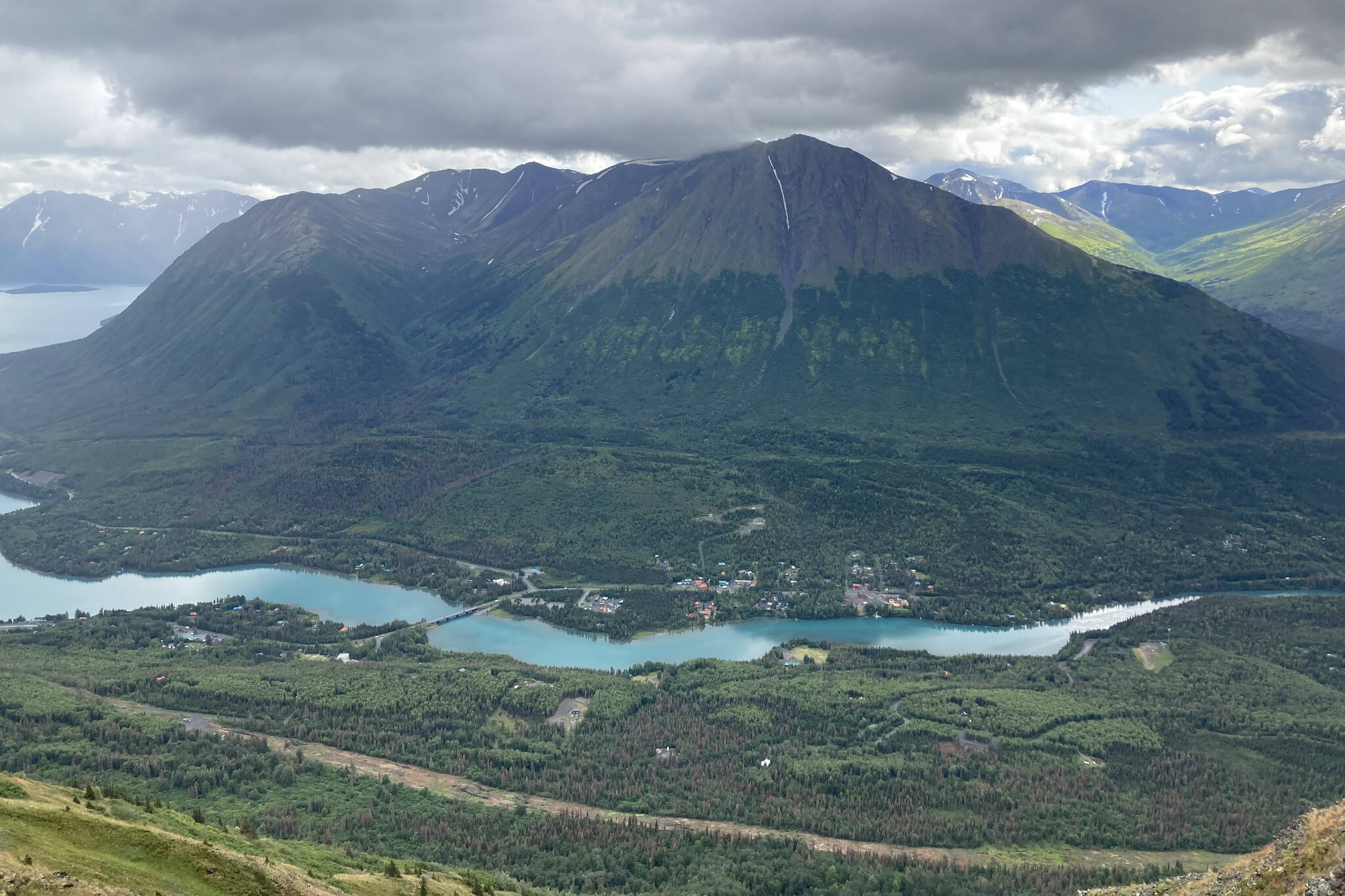The Kenai Peninsula Borough Assembly earlier this month backed efforts by a group in Cooper Landing to start planning a pathway that would follow the Sterling Highway through Cooper Landing and connect key spots in the community.
The pathway, to be called the “Town Road,” is part of a larger initiative to make Cooper Landing a more walkable community, called the Walkable Community Project. That project has been around for years, but community members are renewing efforts to create a comprehensive path through the area now that work has started on the Cooper Landing Bypass Project.
That project, also called the Sterling Highway MP 45-60 Project, will add 10 miles of new road at around Milepost 46.5 of the Sterling Highway and is meant to reduce congestion through Cooper Landing. The new section of highway will cross Juneau Creek via a steel arch bridge before rejoining the highway around Milepost 56. Construction is already underway, with final completion tentatively scheduled for 2027.
David Story is the chair of the Cooper Landing Trails Committee. He told assembly members last week that community members in the area have pursued safe ways for pedestrians to move through the community for decades, but uncertainty surrounding the impacts of the bypass project has made it hard to plan ahead.
Now that the route of the project has been finalized and work started, Story said it’s the group’s hope that “earnest attention” will be given to their proposed project area. Although the bypass project will reduce traffic through Cooper Landing, it will not eliminate it entirely.
“Every single visitor or resident destined for Cooper Landing will still use this corridor,” Story said. “Every one of the 250,000 annual visitors to the federal, state and borough lands accessed between Mile 45 and 26 will still use this corridor, including every one of the 4.75% of the state’s total annual sportfisher angler days that are represented by the users of Russian and Kenai rivers.”
Story said the group has previously received funds for some elements of the pathway, but gaps remain. In 2012, for example, the group received $550,000 from the State of Alaska through a budget appropriation for work on a path. Current efforts, Story told assembly members, would build on existing work, as gaps still remain.
“Right now, a user who’s camped at the Quartz Creek Campground cannot make it to the Russian River Campground without getting in a vehicle to drive there,” he said.
The resolution passed by assembly members formally supports the Cooper Landing Trails Committee’s efforts as it seeks to take advantage of the state’s Transportation Alternatives Program. A pedestrian pathway along the highway, the legislation says, aligns with the borough’s 2003 transportation plan and its 2019 comprehensive plan.
“The Kenai Peninsula Borough supports the Cooper Landing Trails Committee of the Cooper Landing Community Club in pursuing a TAP project proposal to examine this environmentally and culturally sensitive area of the Upper Kenai River Valley and plan a multi-use, non-motorized, separated pathway connecting business, historical, cultural, and natural assets on Borough, State, and Federal lands within the community and area of Cooper Landing,” the resolution says.
Kenai Peninsula Borough Mayor Peter Micciche during the May 2 assembly meeting suggested that Story work with borough staff to find additional grant opportunities that could help move the project forward.
More information about Cooper Landing’s Walkable Community project can be found on the group’s website at walkcooperlanding.org.
Reach reporter Ashlyn O’Hara at ashlyn.ohara@peninsulaclarion.com.


